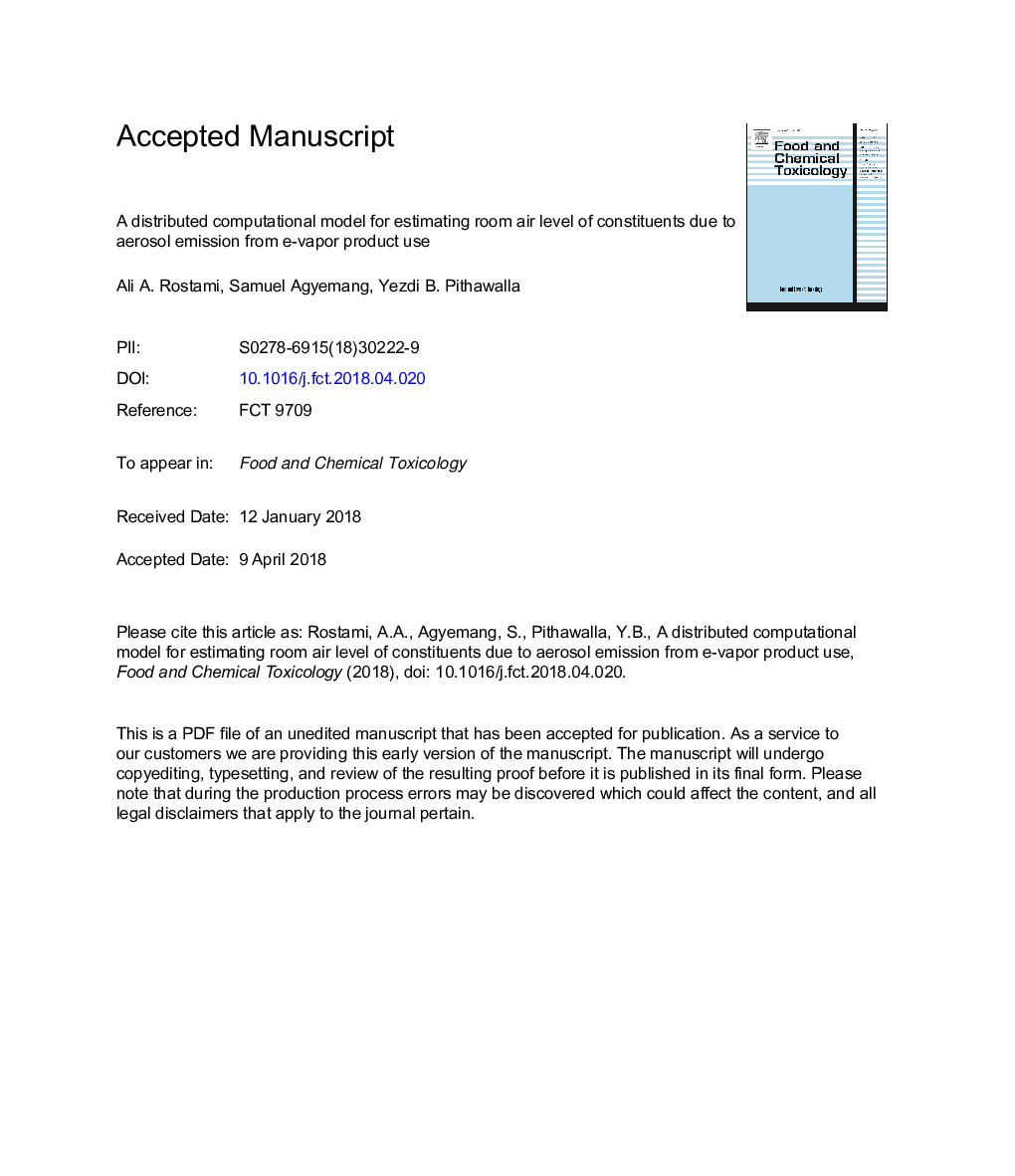| Article ID | Journal | Published Year | Pages | File Type |
|---|---|---|---|---|
| 8547256 | Food and Chemical Toxicology | 2018 | 49 Pages |
Abstract
Most indoor air quality models reported in the literature are well-mixed models. A well-mixed model estimates the room average concentration of constituents from sources. It does not provide information on (1) how far and how fast the emitted chemicals travel in the indoor space? And (2) how the concentration changes as a function of distance from the emission source? We developed a distributed model, using computational fluid dynamics and thermodynamics principles, which allows for aerosol dispersion in an indoor space and includes evaporation and condensation of constituents in a multi-compound aerosol mixture. The distributed model can estimate the spatial and temporal variations of the concentration of individual constituents present in the emitted aerosol in vapor and particulate phases separately. Results from the model were compared with the published experimental data and were found to be in good agreement. A sensitivity analysis was performed to evaluate the impact of various parameters that affect the air level of the emitted constituents within an indoor space, including rate of emission, the rate of air exchange, etc. The model can also be used to estimate the level of second hand exposure in a confined space where e-vapor products (EVPs) are used.
Keywords
OSHAUDFFDAelectronic nicotine delivery systems (ENDS)EVPdpmENDSDRWAChOccupational Safety and Health AdministrationU.S. Food and Drug Administrationair change per hourAir conditioningCFDComputational fluid dynamicselectronic nicotine delivery systemsUser defined functionDiscrete phase modelNational Institute for Occupational Safety and HealthNIOSHPropylene glycol
Related Topics
Life Sciences
Agricultural and Biological Sciences
Food Science
Authors
Ali A. Rostami, Samuel Agyemang, Yezdi B. Pithawalla,
